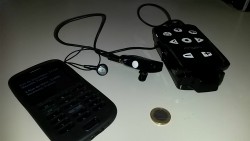Small engine to set small satellites free
Scientists working on the L-μPPT (Innovative liquid micro pulsed plasma thruster system for nanosatellites) project developed a prototype mini thruster to extend the capabilities of the new breed of small satellites - CubeSats. Incorporating a propulsion system will increase the diversity of missions undertaken by these nanosatellites. CubeSats have dimensions of 10 cubic cm and hence impose the most demanding mass budget. Attempting to incorporate a propulsion system into such nanosatellites is a highly ambitious goal. However, the benefits of on-board propulsion to change orbit or even propel them to far-flung destinations that currently require larger spacecraft outweigh the increased system complexity and cost by far. Due to their reliability and low weight, a pulsed plasma thruster (PPT) was considered as the most suitable option for nanosatellites. A PPT operates on a train of pulses. Each pulse is a plasma discharge that forms across the propellant, typically Teflon. The spark erodes the metal from the electrodes and electromagnetic fields accelerate the eroded mass out of nozzles, producing thrust. The L-μPPT team replaced blocks of Teflon with a non-toxic liquid propellant, allowing the amount of fuel introduced to be tightly controlled. The physical mechanisms that occur within a PPT were analysed on a test bed to determine the efficiency with which the energy stored in the capacitor is converted to energy to accelerate plasma. Understanding this issue was key to design of a functional prototype weighing 0.33 kg and measuring 33 mm in height. The first prototype was fabricated using mature and inexpensive technologies adopted from printed circuit boards. L-μPPT scientists conducted multiple vacuum chamber tests to verify the targeted impulse of at least 100 Newton per second and 3-axis attitude control. The L-μPPT system is one of the first propulsion systems to provide full axis control on nanosatellites. Having an active propulsion system in orbit will open up new possibilities for CubeSat missions, like rendezvous and docking. The experience gained in using the new liquid μ-PPT on CubeSats could then be scaled for larger missions, providing a low-cost and low-mass solution for future endeavours.
Keywords
Pulsed plasma thruster, nanosatellites, Cubesats, propulsion system, Teflon







